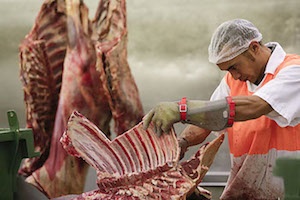Resumption of Poultry Production in Southeast Asia: Trends and Prospects
Factors Driving Growth:
One of the key factors driving the increase in poultry production was the challenges facing the pork industry, particularly in the Philippines due to outbreaks of African swine fever ( ASF ). These circumstances led to a decrease in pork supply, which in turn increased demand for alternative protein sources, such as chicken. Consumers became more focused on affordable and cost-effective products, which contributed to the growth of poultry sales.
Regional Features: The Philippines led the way in poultry production growth with a 6% increase. Vietnam
and Malaysia followed , with growth between 4% and 5%. These countries benefited from increased consumer spending and the increased availability of chicken, which in turn stimulated market demand. Importantly, increased domestic demand is also leading to increased imports, especially in net importing countries such as the Philippines, Vietnam, and Malaysia. Future Outlook : Poultry production in Southeast Asia is expected to continue growing at a 3-4% rate in 2025 . The Philippines will continue to lead the way with projected growth of 4 to 5%. Stable feed prices will be a key factor influencing the industry's future development. Controlled production expansion will be crucial for long-term success to avoid oversupply and price declines. Thus, Southeast Asia is on track for recovery and growth in poultry production. The impact of external factors, such as ASF outbreaks in the swine industry, as well as domestic economic conditions, create unique opportunities for the industry's development. it is crucial for producers to adapt to changing market conditions and seize opportunities for sustainable growth, which will allow them not only to strengthen their position in the domestic market but also to expand their EXPORT opportunities.
Read together with it:
- С начала года Московская область увеличила экспорт свинины на 35% в стоимостном выраженииМосковская область продолжает укреплять позиции одного из ведущих экспортеров продукции агропромышленного комплекса в России. По итогам 9 месяцев с начала года регион нарастил экспорт свинины на 35% по стоимости. В натуральном выражении объем поставок составил 85 тысяч тонн, что на 17% больше, чем за аналогичный период прошлого года. В Министерстве сельского хозяйства и продовольствия Московской о...
- В Татарстане за 9 месяцев 2025 года произведено 314 тыс. тонн мяса скота и птицы, надоено 1 млн 405 тыс. тонн молокаВ Республике Татарстан на сегодня выкопано 42 тыс. га площадей сахарной свеклы, это 79% от плана. Накопано свыше 2 млн. тонн корнеплодов со средней урожайностью 490 ц/га. Сахарными заводами заготовлено 667 тыс. тонн, переработано 593 тыс. тонн сырья, выработано 82 тыс. тонн сахара. Такие данные привел заместитель Премьер-министра РТ – министр сельского хозяйства и продовольствия РТ Марат Зяббаров ...
- Беларусь и Алтайский край намерены увеличить биржевую торговлю сельхозпродукцией23 октября, Минск. Поставки белорусской мясомолочной продукции в Алтайский край и закупки зерна и семян для аграрного сектора Беларуси определены в качестве магистральных направлений сотрудничества в сфере электронной биржевой торговли. Такая договоренность достигнута по результатам встречи представителей Белорусской универсальной товарной биржи с делегацией деловых кругов Алтайского края, которая...
- Минчанин осужден за истязание беременной сожительницы23 октября, Минск. Суд Советского района Минска вынес приговор по уголовному делу об истязании беременной женщины. Об этом сообщает БЕЛТА со ссылкой на пресс-службу Минского городского суда.Обвиняемый систематически, с 13 июня 2024 года по 18 апреля 2025 года, будучи нетрезвым, наносил побои сожительнице, которая была беременна. Женщина из-за отсутствия личного заработка находилась в зависимом от ...



